Being a food lover means seeking the freshest ingredients to elevate your meals. Imagine freshly crushed pepper on your breakfast omelette or generously sprinkled on toasted, buttered bread. These peppercorns have a rich history, traveling to kitchens worldwide with ancient traders. Did you know that before black pepper from Kerala’s Malabar Coast spiced up dishes, food was mostly bland? Fascinatingly, this treasured spice from India was even used to season European desserts during lavish feasts.
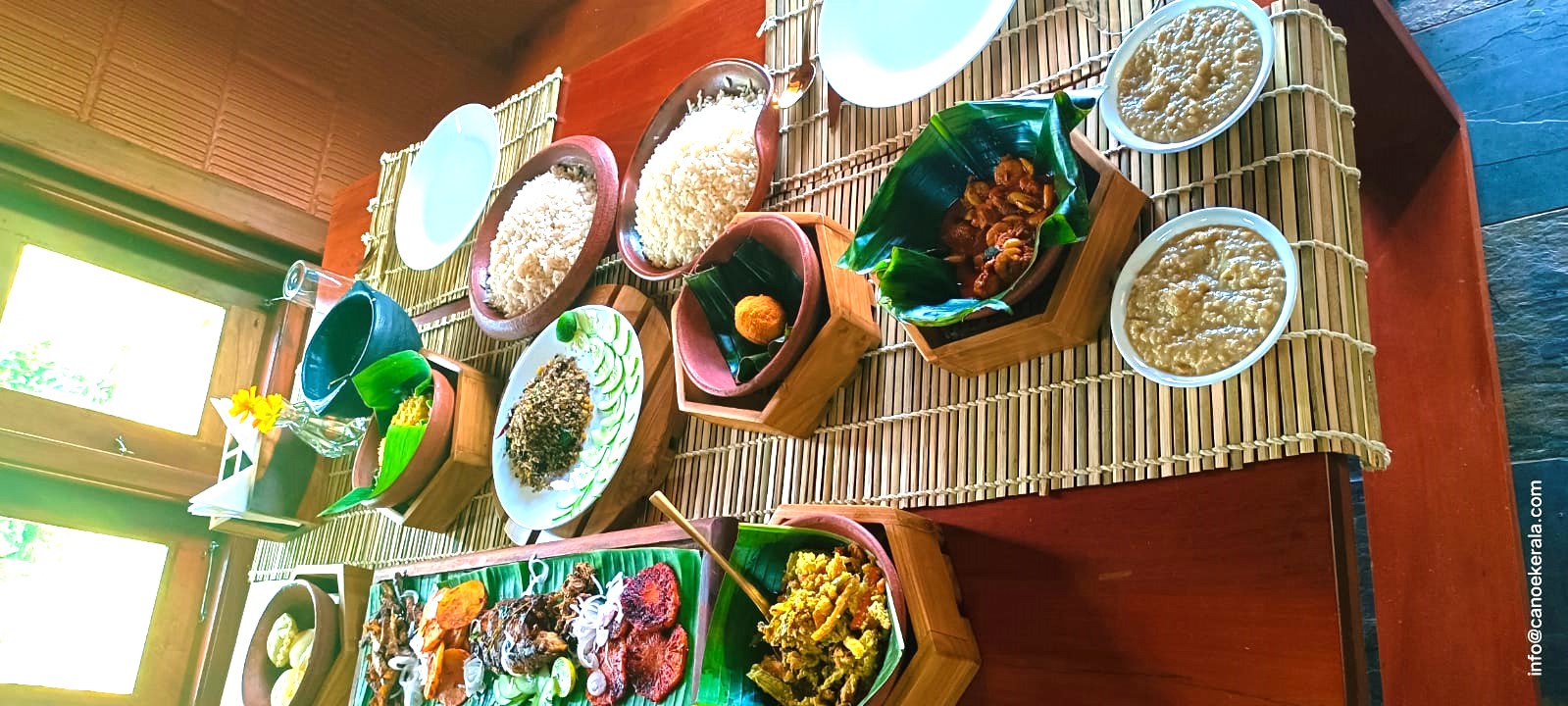
Like pepper, Kerala boasts an array of spices and cooking traditions that make it a food lover’s haven. The flavors of traditional Kerala cuisine are diverse, influenced by Arabs, Portuguese, Syrian Christians, French traders, and the Hindus. Kerala’s cuisine is also shaped by its geography and economic status. In this blog, we'll embark on an enchanting journey to explore the diverse food traditions that have crowned Kerala as a food lover’s paradise.
Kerala cuisine is classified into three key aspects: religion, region, and economic status. Let’s dive into these distinct facets:
I. The Kerala Cuisine Classification on the basis of religion are as follows:
1. Moplah - Malabar Cuisine
The Moplah - Malabar Cuisine is deeply influenced by the Arab Traders who settled in Malabar region centuries ago. This cuisine is characterized by its rich, aromatic flavors and the use of exotic spices. Here are some key features:
Rich Spices and Aromatics: The use of spices such as black pepper, cardamom, cloves, and cinnamon is extensive. These spices are often combined with coconut to create a distinctive flavor.
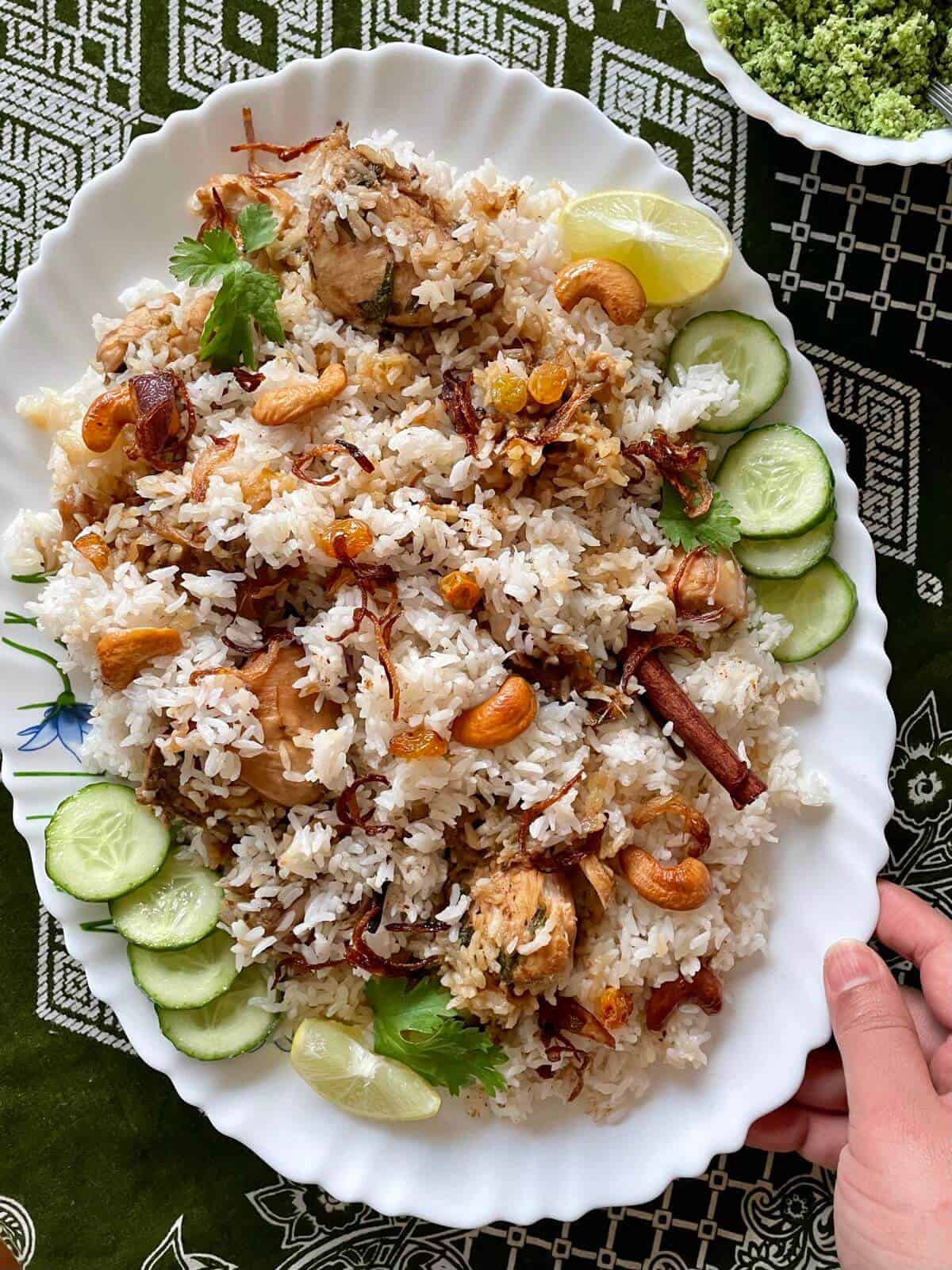
Thalassery Biryani
Meat Specialties: Malabar cuisine is known for its delicious meat dishes like Mutton Biryani, One pot meals like Kozhi Pidi, Kunji Pathal etc.
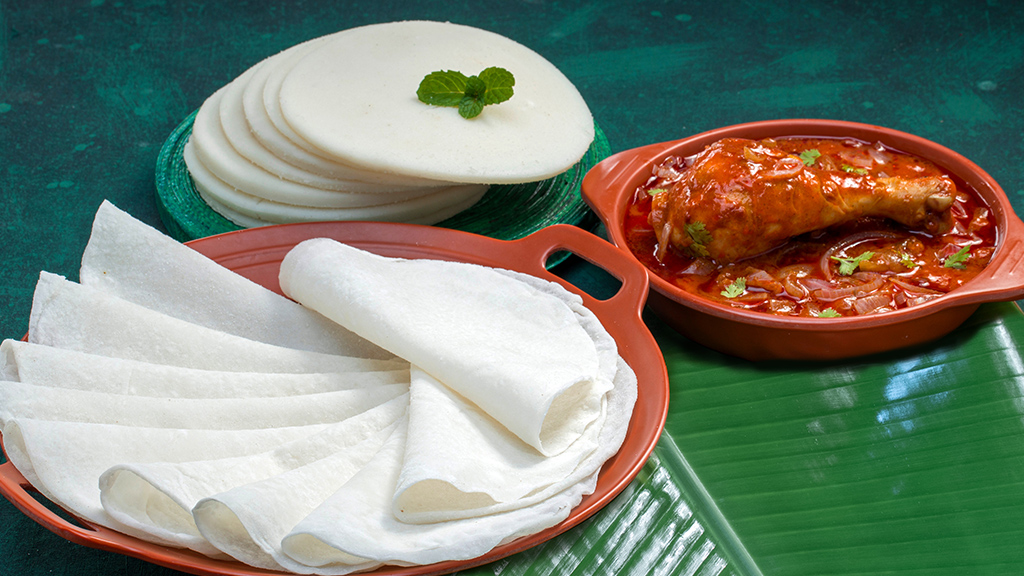
Pathiris
Unique Breads and Snacks: Traditional breads like Pathiri (rice flour bread), Porotta (layered Parantha) and snacks like Unnakaya (banana fritters) are integral to this cuisine. Chatti Pathiri, a layered pastry similar to lasagna but made with thin pancakes and meat filling, is a festive delicacy.
Read about the Moplah Cuisine of Kerala in detail, here:
The fabulous Muslim Cuisine Of Kerala that will melt your mouth!
2. Syrian Christian Cuisine
Christianity arrived in Kerala in AD 52 with St. Thomas, one of Jesus Christ's twelve apostles. The followers of St. Thomas came to be known as Syrian Christians. Their cuisine reflects a blend of Western influences and local spices, ingredients, and traditional cooking methods. Typical dishes in traditional Syrian Christian households include Mappas, Stew, Molee, Roasts, and Appams, along with popular snacks like Kuzhalappam and Achappam.
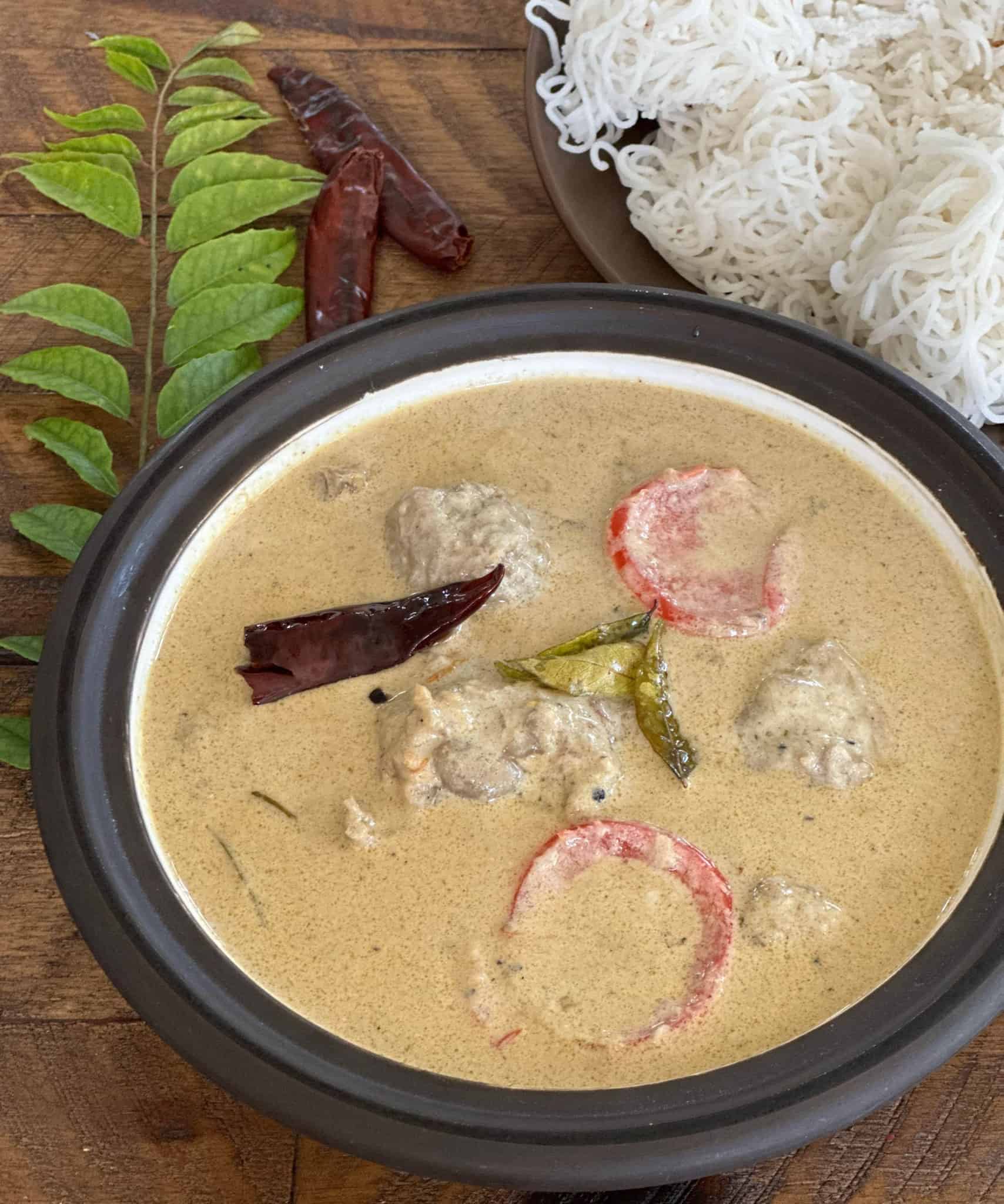
Duck Mappas
One of the distinct features of the Syrian Christian Cuisine is the rich blend of Meat and Coconut Milk in almost all dishes.
3. Hindu Cuisine
The Hindu Cuisine of Kerala is predominantly vegetarian but you can find very few meat dishes, too. The vegetarian delicacies that are generally served in community feasts or sadhya are Avial, Thoran, Olan, Kootu Curry, Erissery and Pachadi.
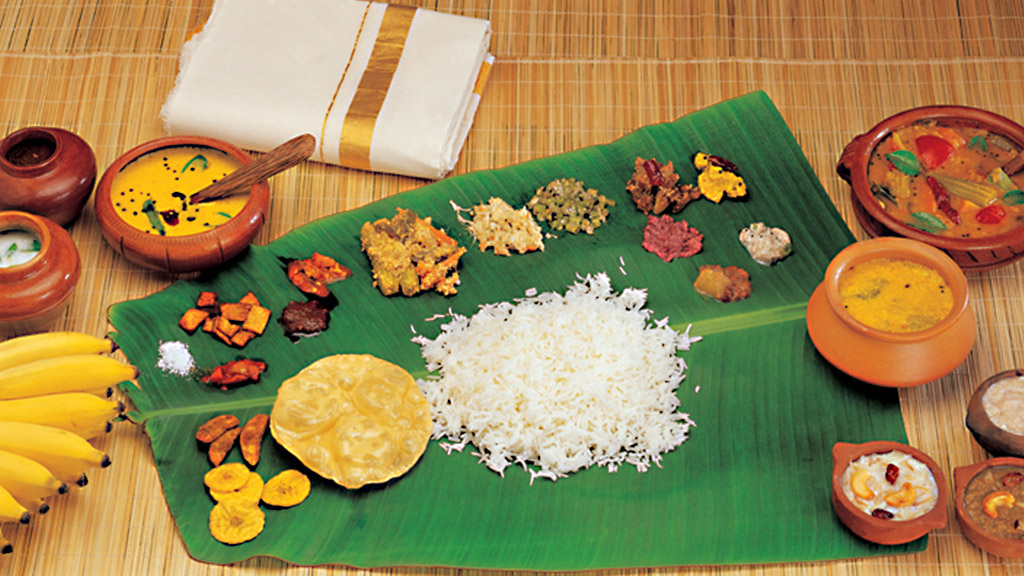
Sadhya Spread
This cuisine emphasizes the use of locally grown vegetables, lentils, and coconut.It is known for its simplicity and nutritional balance.
Dishes are often tempered with mustard seeds, curry leaves, dried red chilies, and asafoetida, giving them a distinctive flavor.
Erachi Choru is one pot rice and meat dish occasionally savored in the Hindu families.
To get a complete list about the Sadhya Menu please click here.
II. The Kerala Cuisine Classification on the basis of region are as follows:
Geographically there are two regions in Kerala - Highlands and Coastal Areas.
1. Hill or Highland Cuisine of Kerala: In the highland areas of Kerala, the principal food items are dried fishes and meats:
Dishes like Dry Fish Curry, Unakka Meen Chathachathu are delectable dishes popularly loved and eaten in the hills. Meat dishes like Thalassery Kozhi Curry (Chicken Curry from Thalassery), Duck Roasts and Beef Kurumalakittathu (Beef with chopped coocnut and sauted with coconut oil) are delicious epitomes of the highland cuisine of Kerala.
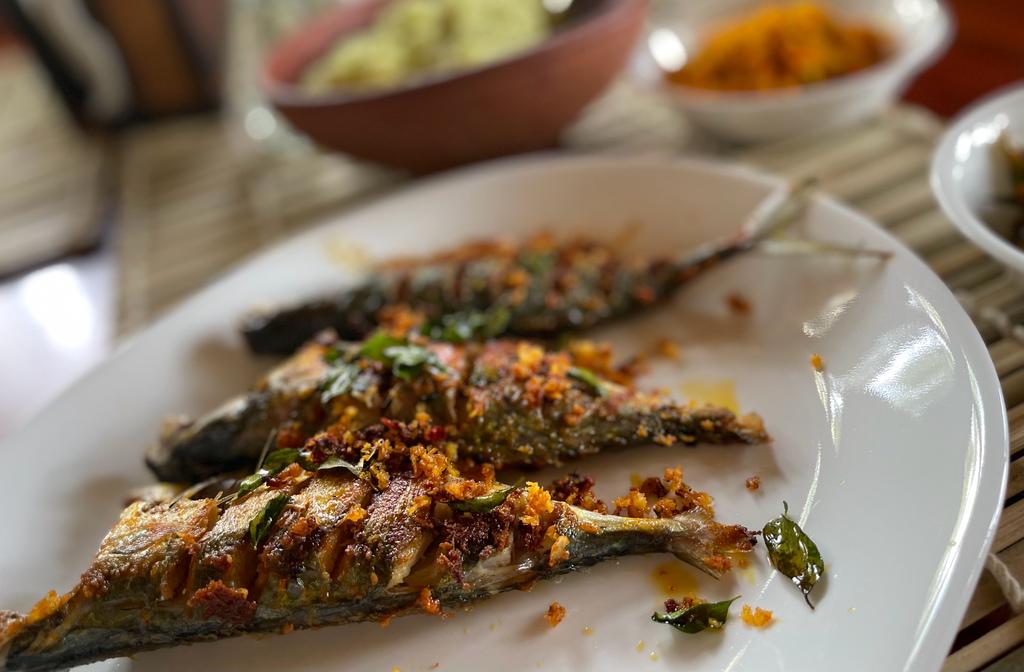
2. Coastal Cuisine of Kerala:
Coastal Cuisine of Kerala comprises fresh fishes, rice from the nearby paddy fields, crabs and duck meats. Chemmeen Kari or Prawn Curry with a dash of coconut milk, Karimeen Pollichathu, Spicy Mussel Curries and Crab Roasts are some famous dishes from the coastal areas of Kerala.
III. The Kerala Cuisine Classification on the basis of economic status are as follows:
1. Dishes which were common for the Elite or Upper class Keralites - The upper class or the elite Keralites had access to privileges like rice and meat. They used to eat dishes like Fish Moilee, Thalassery Biryani, Meat Roats with Porottas etc. They also had access to fresh vegetables from the markets so vegetarian dishes were also made in the Upper Class Homes. They did not have root vegetables like Tapioca or Kappa even during the lean rainy months.
2. Dishes which were common for the Lower Middle Class - The food was a mixture here, sometimes fresh rice and curries, idli and dosa, appams appeared on their tables but at times they had to make do with other alternatives like dry fish preparations and boiled tapioca. Neychorru or Biryani was not commonly prepared in the lower middle class homes. Kanji and Papads were two other common food items in these homes.
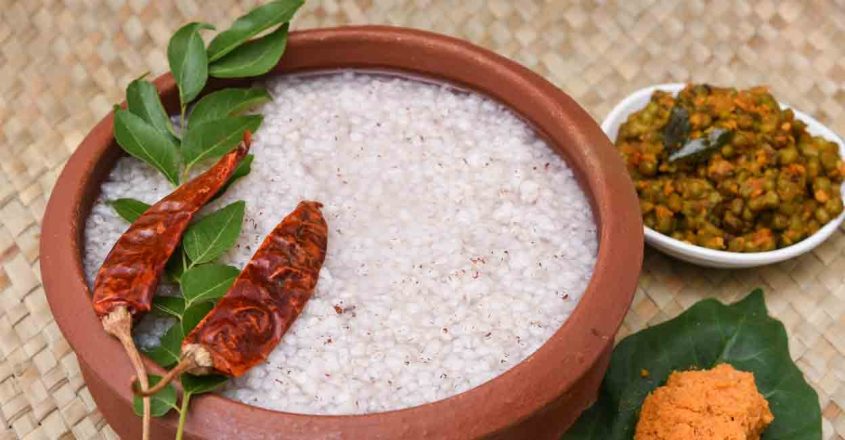
Kanji
3. Dishes which were common for the poor people - The financially downward people had no access to crops like rice or vegetables. Irony is they used to grow the crops but they themselves had to make do with root vegetables like Kappa or Tapioca. Tapioca was boiled and mashed to act as a substitute for rice and they used to have the mashed Kappa with chilli chammanthis or chutneys. Kappa Biryani made from the boiled tapioca was also a very popular dish among these people.
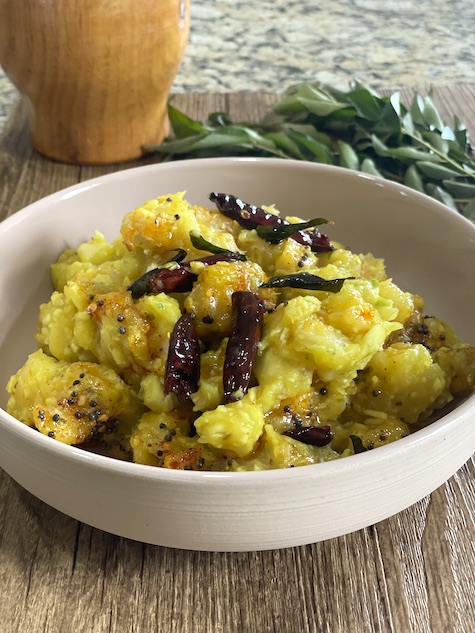
Kappa Puzhukku or Boiled and Mashed Tapioca tempered with spices
What makes Kerala food preparation different from other places?
The Kerala Cuisine may be diverse according to different aspects like religion, region or economic status but the cooking method and preparation unites these aspects. Using stone grinders, clay pots, and wood-fired stoves, Kerala’s traditional cooking methods add authenticity and connect food to its cultural roots.
Would you like to join our kitchen for an unforgettable culinary experience in Kerala? Would you like to discover the state's diverse cuisine, rich spices, fresh ingredients, and traditional cooking methods that make it a food lover's paradise? We welcome you to savor aromatic seafood, hearty vegetarian dishes, and delectable sweets as you embark on a gastronomic journey that reflects Kerala's cultural richness and natural bounty. Embrace the flavors of Kerala with us and experience the essence of a land where food is celebrated as an integral part of life. Book your culinary experience packages today!


The Story of Wonderwerk: From Concept to Creation
How tapioca became Kerala's symbol of food sustainability
Beyond Karimeen Pollichathu: 5 Traditional Spicy Fish Dishes from the Kumarakom Backwaters of Kerala That Celebrate The Culinary Diversity of Kerala